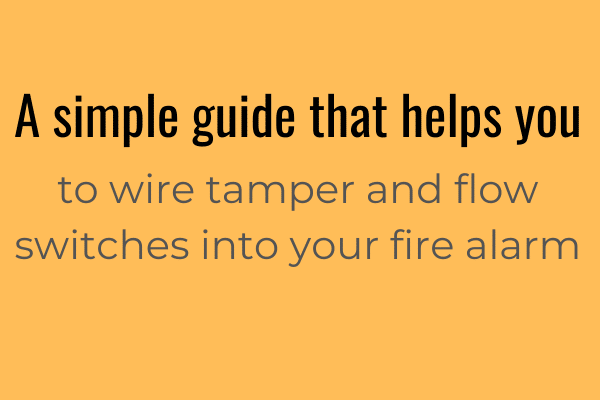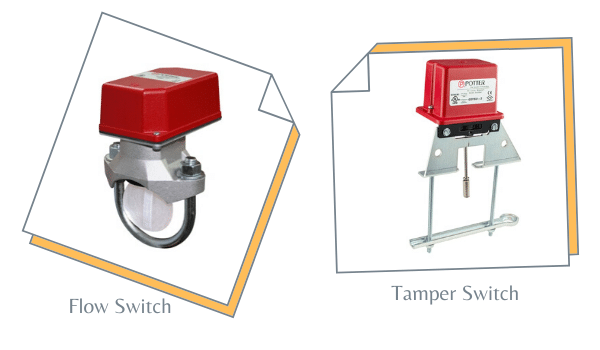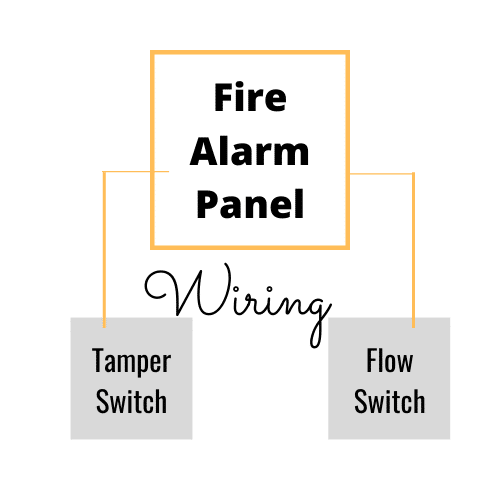Tamper and Flow Switches Wiring Made Easier
Last updated on August 27th, 2022 at 08:00 pm
As strange as it may seem, sprinkler systems are one of those things that you want to have in your building but you never want to use!

By the time you are utilizing the fire sprinkler system, it means that your property is in trouble! Hence, it’s everyone’s wish that you will not need it at all. But on the other hand, they can save lives and properties, so they’re necessary to install.
The thing is, they can be quite complicated. Conspicuously, the sprinklers themselves can be fail-proof but the other elements in the system are very prone to the elements.
To be more specific, the valve is one of the most vulnerable, so regular checking and maintenance is highly necessary.
To make things simpler, a tamper and flow switch can come in handy. These items will help you properly monitor the status of your sprinkler system, so you should certainly look into them.
Contents
What are Tamper and Flow Switch?
Tamper and flow switches are two of the most commonly used automatic fire alarm triggers available today. In their most basic forms, they inform the fire alarm system that the fire suppression system has been activated at one point of the building, without requiring human intervention or activation.
Flow switches detect the flow of water inside the pipes of a fire suppression system. As you would expect, flow in the pipes would generally mean that the sprinklers or other connected fire fighting equipment has been activated.
As a result, this functionality makes flow switches an integral part of automated fire alarm systems as they do not require a user to pull down the fire alarm switch.

On the other hand, tamper switches try to ensure that human interaction with the fire suppression system, like partial or full closure of the sprinkler system valves, is detected and an alarm is triggered.
Depending on the implementation of the end-user, tamper switches can also be set up to trigger an alert notice or trouble signal instead of a full alarm.
Can you install Tamper and Flow switches in your System?
There are a lot of factors that would affect the process of installing tamper and flow switches in a fire alarm system. For instance, some of them are design considerations, system compatibility, local laws and regulations, and end-user preference.
Most systems that can make use of these switches require that they are installed in particular parts of the installation. And this sometimes makes it difficult for plumbing and wiring that were already in place before the decision to add the switches.
If this is the case in your structure, make sure that there is enough space and allowance for the switches and that the diameter and directionality of the pipes are compatible and taken into account.
In addition, take special care in planning the wiring for the switches as they may need additional conduits if the switches are new additions
Watch outs
Foremost, compatibility between the switches and the fire suppression switches need to be checked before installation. Some manufacturers have very specific requirements regarding the switches allowed to interface with their control boards, but it is often possible to purchase between brands if they are confirmed to be using the same specifications and protocols.
Besides, the local regulations will also dictate some of the aspects of the installation. For example, in some jurisdictions, the fire suppression system is required to initiate a general alarm if the tamper switches are triggered, while others only require a fault notice or alert on the control panel.
That being so, check with your national and local fire and building codes to make sure that your fire suppression system will remain compliant.
Finally the end-user will also have a say in how the switches will be installed. The effective number of Tamper and Flow Switches can often be limited by the budget of the buyer.
If the budget is limited, it is better to position the switches to cover as much of the system as possible within the maximum allowed by the specifications.
How do You Wire a Tamper and Flow Switch into a Fire Alarm?

Laying down the wiring is a good first step in the installation of these switches. There are often many physical limits and constraints on the wiring that would not be immediately visible just looking at the building and electrical plan.
Double check that your installation is equipped to adjust to such things.
Prior to installation, carefully study the specifications and wiring diagrams that come with your particular switch.
Be cautious, some switches are actually two switches in one, these can be used to alert and operate through a regular control unit as well as activate a local visual or audible alarm.
Take careful steps to follow the switch wiring diagram as failing to follow them will result in false alarms or render the switch non-functional.
Final Thoughts
Finally, during physical installation, take special care in ensuring that the terminal connectors are properly tightened.
Knockouts, the pieces of housing often made of plastic that is meant to be removed depending on the installation requirements, should be properly removed with the appropriate tools.
Check to see that the edges are not cutting into the wires.

